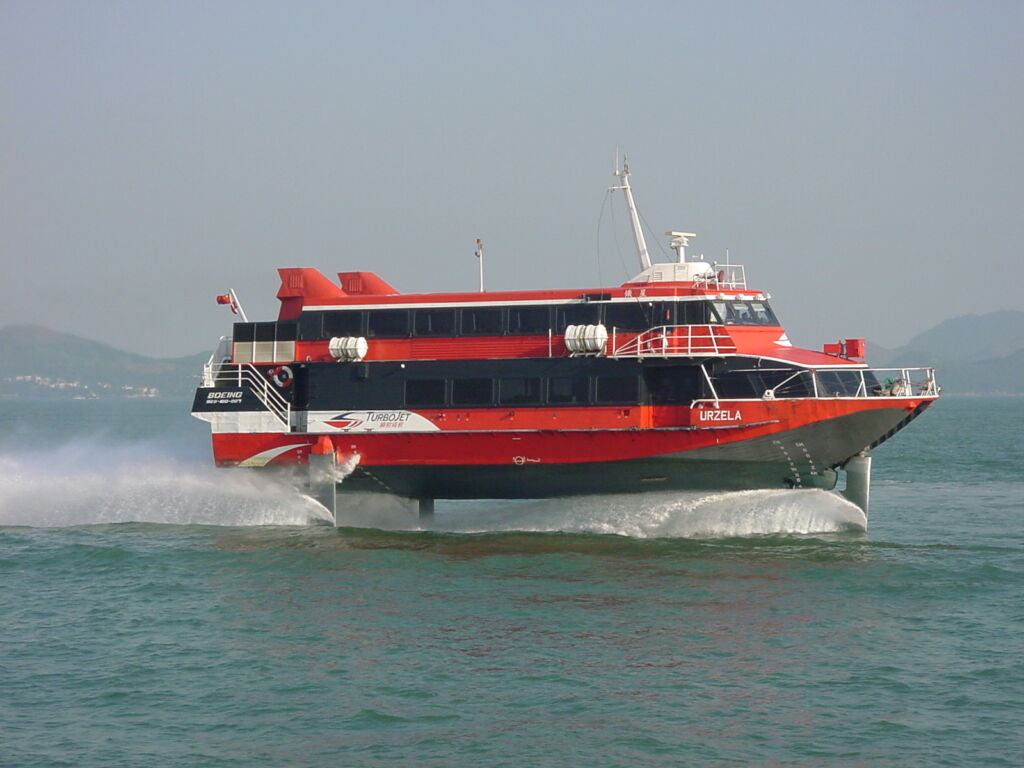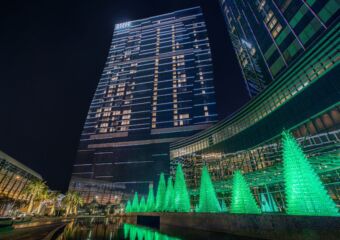Featured image source: Wikipedia
If you’ve lived in Macau–or traveled to the city–sometime before 2020, you’ve certainly spotted several boats crossing the Pearl River Delta. Besides the cargo vessels, there are the iconic red and white ones–also blue ones now–known as jetfoil ferries. These transport people between Macau and Hong Kong 24 hours a day. The journey takes about 45 minutes and it used to be one of the most frequent means of transportation taking people to and from the two regions. The 1960s were a roaring decade all over the world, Macau and Hong Kong included. Did you know these vessels were part of a military project? Today, we tell you the story of those red and white vessels which were part of our lives for more than 50 years.
From planes to hydrofoils
The hydrofoil is a type of technology similar to the ones used on airplanes that land on water. It’s basically a system used on boats to allow greater speeds. They started being developed in the 19th century.
German engineer Hanns von Schertel–who worked on hydrofoils during and after World War II in Germany–went to Switzerland after the conflict and opened his own company (Supramar) in 1952. The company then launched the first-ever commercial hydrofoil, PT10 Freccia d’Oro (Golden Arrow), on a lake connecting Switzerland and Italy. It could carry up to 32 passengers and traveling at 65 km per hour.
However, hydrofoils weren’t the first boats to do the Macau-Hong Kong routes. People used to arrive in the region by ferry–similar to the ones Hong Kong still has that travel between Sheung Wan and Kowloon. Ferry trips to and from Macau in those days took about four hours. These ferries were pretty popular during the time Macau became a must-visit destination for filmmaking. Actors like Robert Mitchum and Jane Russell, and even James Bond’s creator, Ian Fleming, have taken these boats on their way from Hong Kong to Macau. Tak Shing, Fat Shan, and Tai Loy were the most well-known ferries in Macau.
The hydrofoil is the predecessor of the jetfoil, which became quite popular in Hong Kong and Macau, brought there from the USA by a prominent and well-known figure in the region. Sociedade de Jogos de Turismo de Macau (STDM) has always been involved in the maritime connections between Macau and Hong Kong. With businesses in both regions, the company was keen on enhancing the tourism numbers. In 1963, Teddy Yip (one of the partners at the company) went to the States and Messina (Italy) to purchase the first hydrofoil. It was named Coloane.
Presently, Macau has two maritime ferry terminals and other boat harbors. The Outer Harbour Ferry Terminal was, for several decades, the most important one. However, it hadn’t been built yet when the first hydrofoils started operating in Macau in 1964.
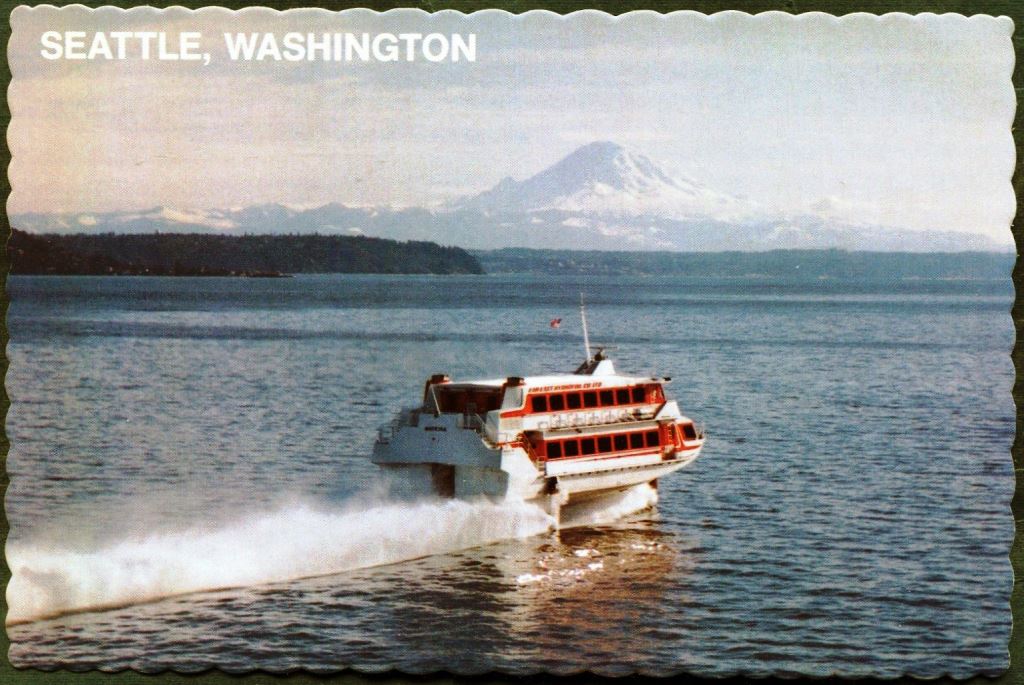
Madeira jetfoil in Seattle before being sent to Macau. Source: Macau Antigo blog
Seattle, Boeing & the Stanley Brothers
One of the most interesting facts about jetfoils in Macau is how they first got there. John Ho (Stanley Ho’s brother) was in Seattle to visit his daughter living close by and decided to meet a representative of Boeing–yes, the world’s largest aerospace company–and learn about their newest project: a hydrofoil called Jetfoil. These vessels were developed for military purposes and while some did follow their purpose, most were used for commercial passenger transportation. This project started being developed in 1972 and the first two Jetfoils arrived in Macau in 1975 after they serviced routes in the Hawaiian Islands.
Flores–named after one of the Azores islands–was the world’s first Jetfoil, made in 1974. Originally called Jetfoil One, it was one of the boats that served in Hawaii and the third one acquired by Far East Hydrofoil Co. in 1978.
After some time, he was invited by the Ho brothers to a meeting in Hong Kong and the result was the purchase of two boats, 002 and 005. The siblings owned Far East Hydrofoil Co. (FEH), which managed other vessels before buying these Boeing 929 models. The featured image above shows Madeira being tested on Seattle waters before heading to Hong Kong. Unfortunately, Madeira had an accident in 2013 and was decommissioned.
Although FEH was already operating with several other boats, the Jetfoils were the ones responsible for the company’s market share increase from 14% (in 1967) to 36% in 1976. This was mostly due to the introduction of the new Boeing boats. FEH later became Turbojet.
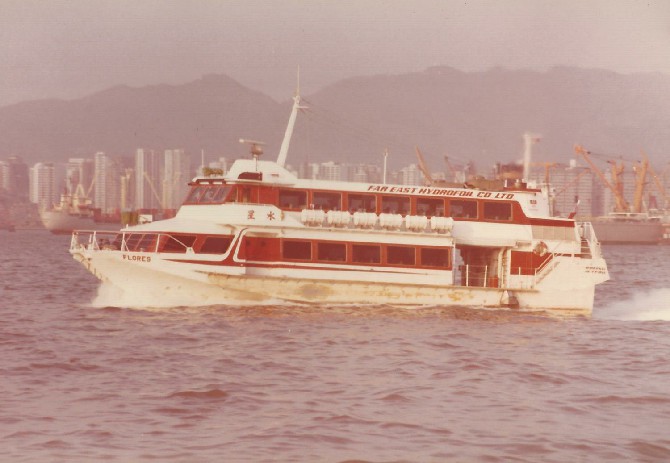
Flores Jetfoil. October 1952. Source: Jetfoil Conservation Concern Group
Night Vision & Royal Navy Ships
When they first started operating, there was no night service because the Hong Kong Maritime Department (HKMD) believed it was dangerous to travel in the water with the illegal sampans that were usually there. Once again, Boeing stepped in and created a lighting system–an infrared illuminator–that allowed the Jetfoil to travel at night. These routes took off in February 1980 and were a huge success, reaching about 1 million passengers just in its first year!
Another curious fact is that almost every Turbojet vessels have Portuguese names, including people’s and places’ names such as São Jorge, Santa Maria, Pico (locations on Madeira and Azores islands), or Cacilhas. There were three major passenger vessels operating through time: the hydrofoil, the Jetfoil, and the hovercraft. Among the three, the Jetfoil is the one with the most passenger capacity and still operating, contrary to the other two. TurboJET is the world’s largest operator of Boeing’s Jetfoils and all of them used to belong to former FEH.
Some of the Macau-Hong Kong Jetfoils have really interesting pasts! One of them even served the Royal Navy as HMS Speedy (P296) before becoming Lilau and operating commercial routes between Macau and Hong Kong from the 1990s onwards.
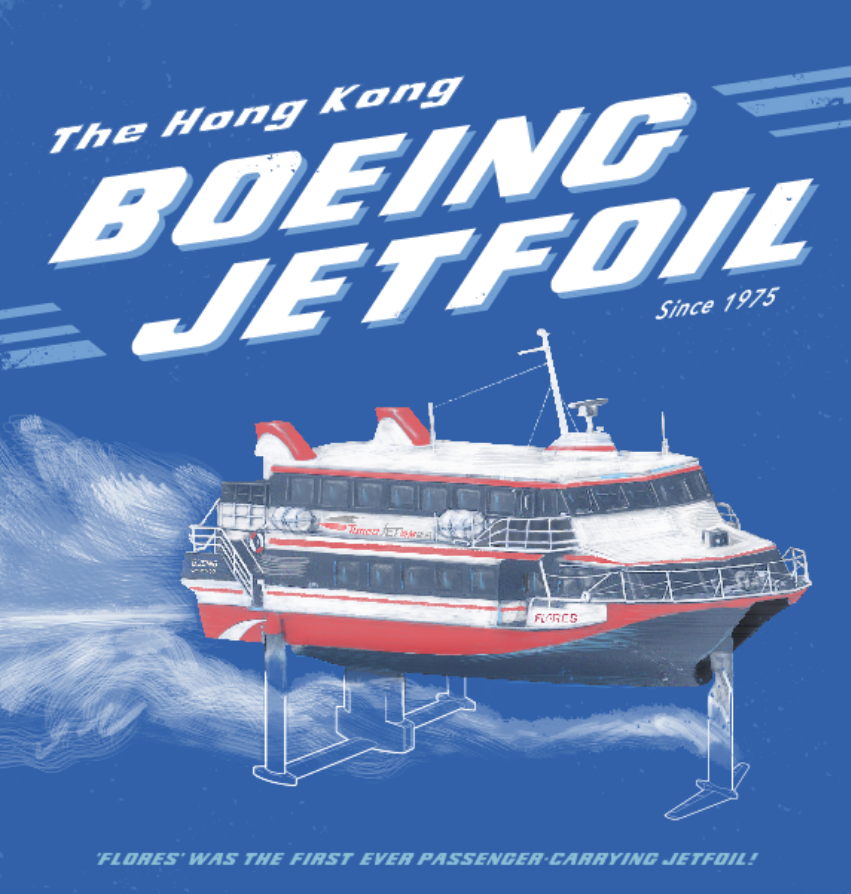
Photo credit: Nick Shearman
Vanishing Vessels
Unfortunately, some of these Jetfoils are being put to pasture and being dismantled. There are groups revindicating the need to preserve the boats as they carry a lot of history and are part of Macau’s past. One of such groups is the Jetfoil Conservation Concern Group, which mourned the loss of Santa Maria–one of the oldest Jetfoils that served the Hong Kong-Macau route from 1975 to 2019–at the start of 2021.
The same group also raised concerns regarding Flores, Boeing’s first-ever Jetfoil first serving in Hawaii and later in Hong Kong. Both boats–along with another one called Balsa–were founded at shipyards such as the Wang Tak shipyard.
If you’re interested in some more specifics on these vessels, click here
Also read: Macau Bridges: Connecting Islands Since 1974

